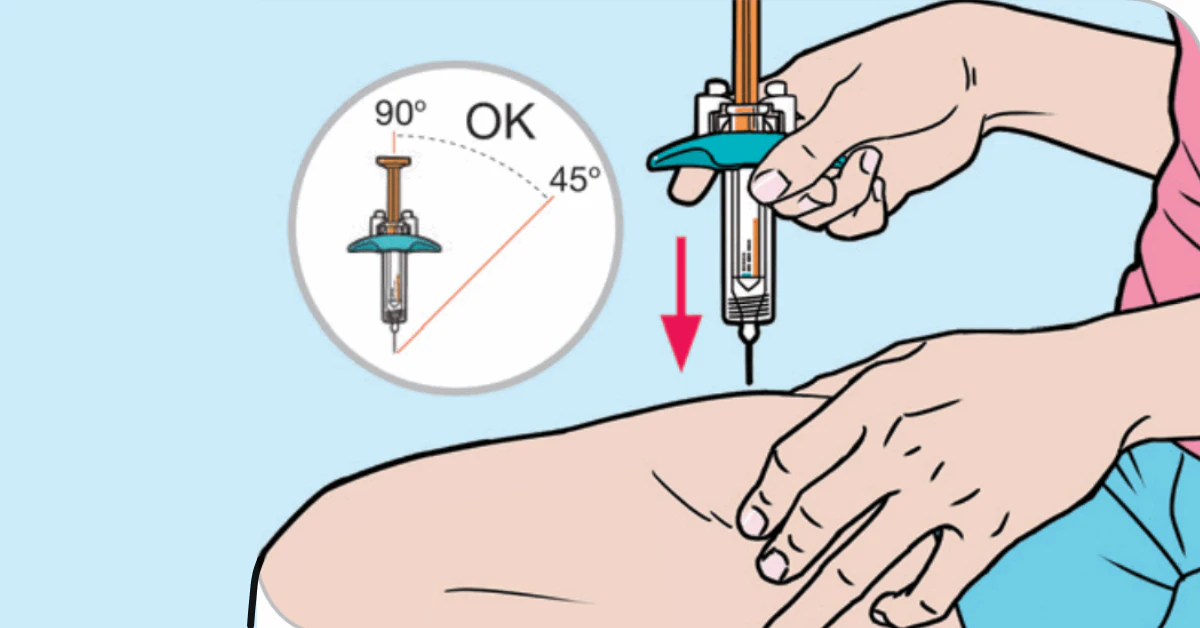Hey there! If you’ve landed on this page, you’re probably wondering how the enspryng injection works, what it feels like, and maybe even how much it costs. I get it—starting a new medication can feel like stepping into the unknown, especially when it’s a monthly self‑injectable for a condition like NMOSD. So let’s sit down (or sip a coffee) and walk through everything you need to know, from the science behind the drug to the everyday tricks that keep you on schedule. Think of this as a friendly chat with a buddy who’s done a little homework, talked to patients, and dug up the latest research. Ready? Let’s dive in.
What Is ENSPRYNG?
In a nutshell, ENSPRYNG (satralizumab) is a prescription medicine designed for adults who have neuromyelitis optica spectrum disorder (NMOSD) and test positive for aquaporin‑4 (AQP4) antibodies. It’s a monoclonic antibody that blocks interleukin‑6 (IL‑6) signaling, which in turn reduces the production of those pesky AQP4 antibodies that can damage your optic nerve and spinal cord.
If you’re curious about the nitty‑gritty, check out our deep‑dive on the enspryng mechanism of action. The science can sound heavy, but the takeaway is simple: by calming the immune system’s over‑reaction, ENSPRYNG helps keep relapses at bay and gives you a chance at steadier, brighter days.
Getting Ready
Before you even think about pulling a prefilled syringe, there are a few essential steps your doctor will walk you through. Think of it like getting your car serviced before a long road trip—doing the prep work saves headaches later.
- Infection check‑up: Your provider will want to be sure there’s no active infection brewing. This includes a quick screen for hepatitis B and tuberculosis.
- Liver labs: A baseline liver enzyme test helps ensure your liver can handle the medication.
- Vaccinations: Live vaccines must be given at least four weeks before you start ENSPRYNG, and non‑live vaccines two weeks prior. This is a key safety step, according to the prescribing information.
- Training session: Once cleared, a nurse or specialist will train you (or a caregiver) on the self‑injection technique. You’ll get a video, a printable guide, and plenty of time for questions.
When you’re cleared, you’ll also receive a handy injection diary (or you can use any phone app that lets you log dates). Trust me— tracking your doses early on makes life a lot smoother.
Step‑by‑Step Injection
Okay, the moment of truth. Below is the exact flow I follow (and what the official injection training page recommends). Grab a comfy seat, wash your hands, and let’s go.
- Wash & dry your hands. Clean hands reduce the risk of introducing germs to the injection site.
- Inspect the medicine. The solution should be clear to slightly yellow, with no particles. If it looks cloudy, don’t use it— call your pharmacy.
- Attach a fresh needle. Every injection gets a new needle. Pull the protective paper, snap it onto the syringe, and set the inner cap aside.
- Choose your site. You can inject into the abdomen (away from the belly button) or the front of the thigh. Rotate sites each time— this prevents skin irritation.
- Clean the skin. Swab the spot with an alcohol pad, let it air‑dry, then don’t touch it again.
- Pinch & insert. Gently pinch the skin, hold the syringe at a 45° angle, and push the needle in quickly.
- Press the plunger. Depress the plunger steadily until all liquid is delivered. You’ll hear a faint “click.”
- Withdraw & apply pressure. Remove the needle, press a clean gauze on the spot for a few seconds, then cover with a band‑aid if you’d like.
- Dispose safely. Pop the needle into a sharps container (most pharmacies provide one). Never throw it in the regular trash.
- Log it. Record the date, time, and injection site in your diary or app.
If you ever miss a dose, the guidance is crystal clear (thanks to the “Treatment Schedule” page): take the missed dose as soon as you remember, then follow the original interval— either the 2‑week rhythm for the first three shots or the 4‑week rhythm afterward.
Staying On Track
Consistency is the secret sauce that makes ENSPRYNG work. Here are some tricks that keep me from forgetting my monthly appointment:
- Phone reminders: Set a recurring alarm a week in advance, plus a “day‑of” alert.
- Visual calendar: A wall‑mounted monthly calendar with stickers for each injection makes the schedule visible.
- Travel kit: Carry a small pouch with a pre‑filled syringe (if you have one on hand), a quick‑dry alcohol pad, and a spare diary page. The prefilled syringe stays stable at room temperature (up to 86°F/30°C) for eight days, perfect for a weekend getaway.
- Buddy system: If you have a caregiver or a friend who’s comfortable with the process, ask them to check in with you the week before your dose.
And remember— if you’ve gone more than eight weeks without a dose, give your neurologist a call before you resume. They’ll help you restart safely.
Safety & Side Effects
Every medication has a risk profile, and ENSPRYNG is no exception. The good news is that most patients tolerate it well, but it’s smart to know what to watch for.
Common, mild reactions
- Injection‑site redness or bruising— usually fades in a day or two.
- Headache or mild fatigue— often manageable with water and rest.
Serious side effects (rare but important)
- Infections: Because ENSPRYNG dampens part of the immune system, you’re a bit more prone to infections like nasopharyngitis, cellulitis, or even hepatitis B reactivation. If you develop a fever, persistent cough, or an unexplained rash, call your doctor right away.
- Liver enzyme elevation: Your doctor will order blood tests before you start and periodically thereafter to monitor liver health.
- Low neutrophil count (neutropenia): This can make bacterial infections more serious. Again, routine labs will catch it early.
- Allergic reactions: Signs include hives, swelling, or difficulty breathing. Seek emergency care if these appear.
All of this information is echoed in the enspryng prescribing information. Keep your lab results handy, and never skip a follow‑up appointment.
Cost & Access
Let’s talk money— because a medication’s value is also measured by how affordable it is for you.
- Typical price: In the United States, a single 120 mg prefilled syringe runs roughly between $6,000 and $8,000, depending on the pharmacy and insurance coverage. For a quick snapshot, see our Enspryng price page.
- Insurance: Most private insurers, Medicare Part D, and many Medicaid programs cover ENSPRYNG, though out‑of‑pocket costs can vary. Your neurologist’s office can help you navigate prior authorizations.
- Patient assistance: Genentech offers copay‑card programs, the Patient Foundation for free medication in qualifying cases, and a “financial support navigator” to guide you through paperwork.
- International options: In the EU, ENSPRYNG is approved by the EMA and may be priced differently. If you travel abroad for treatment, check local reimbursement policies.
Don’t let cost deter you— reaching out to a patient‑navigator early on can save you a lot of stress later.
Putting It All Together
So, here’s the TL;DR version of our conversation:
- ENSPRYNG is a once‑monthly subcutaneous injection that blocks IL‑6, reducing NMOSD relapses.
- Before the first dose, you’ll undergo infection screening, liver labs, and vaccination checks.
- Training is required, but the injection steps are straightforward and can be done at home or while traveling.
- Stick to the schedule (first three doses every two weeks, then every four weeks) and use reminders to stay on track.
- Watch for common side effects, and report any signs of infection or allergic reaction immediately.
- Costs can be high, but assistance programs and insurance coverage often make it manageable.
Remember, you’re not alone on this journey. Your neurologist, the patient‑support team, and even fellow patients sharing their stories can be invaluable resources. If you’re ready to start the ENSPRYNG injection regimen, schedule a call with your specialist, ask about the training video, and perhaps download the free injection checklist (it’s a simple PDF you can keep on your fridge).
Got questions? Wondering how to set up your injection diary? Feel free to reach out to your healthcare team—they’re there to help you feel confident every step of the way.
Take the First Step Today
If you’ve read this far, you’re already taking charge of your health— and that’s a huge win. Talk to your doctor about the enspryng fda approval and see if this therapy aligns with your goals. With the right preparation, a friendly routine, and a dash of optimism, the ENSPRYNG injection can become just another part of your monthly self‑care rhythm, helping you focus on the moments that truly matter.


















Leave a Reply
You must be logged in to post a comment.